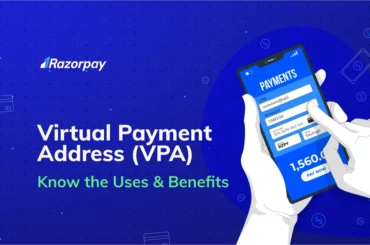We all love and use UPI. We love how we can easily send and receive money from a friend or a family member and how we don’t even have to wait for a while for the money to reflect in our account.
With so many UPI providers out there, with more and more cashbacks, scratch cards and discounts, we’ve seen the rise of UPI like no other mode of payments. It’s so widely used that it is the most preferred payment mode for a greater extent of P2P (Person to Person) transactions.
While UPI transactions are free as of now, there have been indications that some private banks have been levying a fee on UPI transactions of over 20 in a month. Some large private banks have introduced these charges to prevent frivolous transactions.
[Suggested reading: UPI AutoPay Will Be a Gamechanger in the Payments Industry]
What is UPI?
Not that anyone needs an introduction, but here’s one anyway. Unified Payments Interface (UPI) is an instant, real-time payments system developed by the National Payments Corporation of India (NPCI) to facilitate inter-bank transactions. Monitored by the Reserve Bank of India, UPI works by instantly transferring funds on a mobile platform. For those interested in conducting secure and efficient digital transactions, grasping the concept of what is upi and its working is crucial.
So, what’s the catch?
We’re all familiar with the charges levied by banks for transactions carried out by various modes of payment, like NEFT, RTGS, mobile wallets and more. Surprisingly, UPI remained on the other side of the spectrum for a very long time, without charging its users any fee for transactions.
At present, there are no charges for UPI transactions, both P2P and P2M (Person to Merchant), but as the user-base saw new heights, some banks started making announcements to their customers about the charges for P2P UPI transactions from 1st May 2019.
Related Read: UPI Transaction Charges
Private banks levy charges on UPI transactions
Major private banks in India have started to charge users for P2P UPI transactions when the transactions go beyond 20 in a month.
Transactions that amount to INR 1,000 or below will be charged INR 2.50, and transactions higher than INR 1,000 will be charged INR 5. This fee doesn’t include GST, which means, an additional 18% GST charges will be levied as well.
Banks say that the charges have been introduced to prevent frivolous transactions from putting a load on their systems.
While Kotak Mahindra Bank was the first bank to announce these charges, other banks have followed suit as well.
These charges do not apply to the payment of bills, online shopping, merchant payments, etc. Only P2P transactions are to be charged for, irrespective of the bank account or the UPI provider. Most believe that the charges won’t impact how the country uses UPI since most people don’t carry out more than 30 transactions, to begin with. Since P2M transactions remain to be uncharged for, this will not affect the usage of UPI.
We’ve seen a surge in UPI adoption in India, and we only expect it to see newer heights. We also talked about what an impact UPI has made in the fintech adoption in the country in our report The Era of Rising Fintech.
In 2018, HDFC sent an email to its customers about introducing charges on P2P UPI transactions from July 2018 but somehow reconsidered the same. There hasn’t been an update since.
With over 140 banks supporting UPI, we’re sure banks will catch on to the bandwagon sooner or later, and UPI transactions may no longer be free of cost.



